by Rosaria Gargiulo
Muretto Pass
Although it only appeared on the official map in 1618 (copper engraving by Philipp Klüver - Fortunato Sprecher) and then, only under the name of Pian dell'Aro, the Muretto Pass was certainly well-known and well-used from ancient times.
Some coins found there have been traced back on good authority to Roman times (Besta, Bertolone and Muffatti).
It is a "minor" pass compared to the historic roads linking the Po Valley to the lands across the central alps.
In fact, all the oldest maps show that to cross the Rhaetian Alps of the Valtellina, they used the Spluga pass from ancient Clavenna to Coira and the Bernina pass from Tirano to reach the Upper Engadine.
However, an ever increasing number of archeological finds have shown that Sondrio and the Valmalenco were well travelled.
There were pre-Roman settlements (cf. the cave etchings and sickle knife of Arquino) which, from the 2nd-3rd century AD used the Roman coin system (cf. the coins found in Sondrio and Chiesa).
Throughout the Middle Ages, these settlements were gradually fortified to defend them from an enemy, who could arrive from the plain to the south or from the north via the Muretto Pass.
The discovery
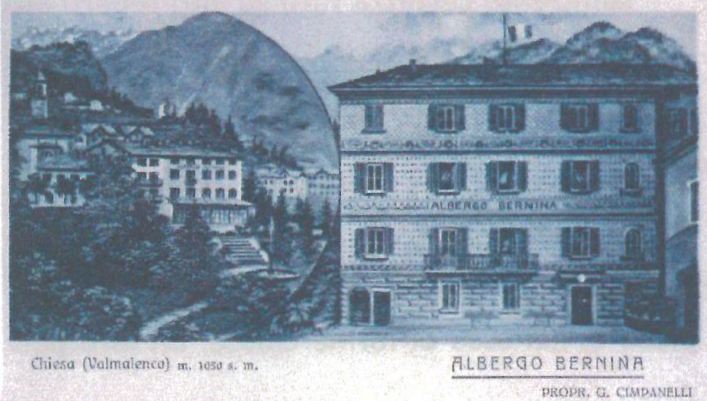 Postcard dating back to the early 20th century.
Postcard dating back to the early 20th century.
In 1880, some ancient objects came to light during work at the hotel, Albergo Olivo, later named the Bernina hotel.
The engineer, Francesco Orsatti, identified two terracotta lamps, a silver brooch, four bronze coins, an iron chain and the hilt of a sword.
In 1970, when the finds were donated to the newly opened Museum of Chiesa Valmalenco, the iron chain and sword hilt had already disappeared and, a few years later, the brooch also disappeared.
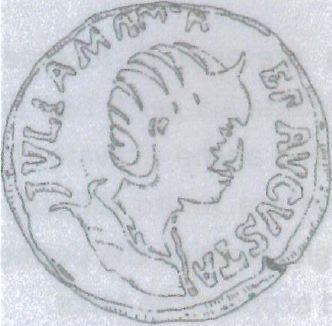 Obverse of a sestertius of Giulia Mamea.
Obverse of a sestertius of Giulia Mamea.
Whereas the sestertius of Giulia Mamea (230 AD) and the three follis coins of Licinius (313 AD) confirm the presence or passage of "Romanised" people in the 2nd-3rd century AD, as already documented throughout the Valtellina, the types of lamps anticipate this presence to the 1st century BC-1st century AD.
This was the period in which many of the Alpine populations (including the nearby Camuni) were subjected to the power of Rome.
The finds allow us to put forward the theory that there was a "statio" in Chiesa, an area fitted out as a stopover, or else a group of tombs.
However, in both cases we may reasonably suppose there was an important communication road, which crossed the Muretto Pass.
Lamps
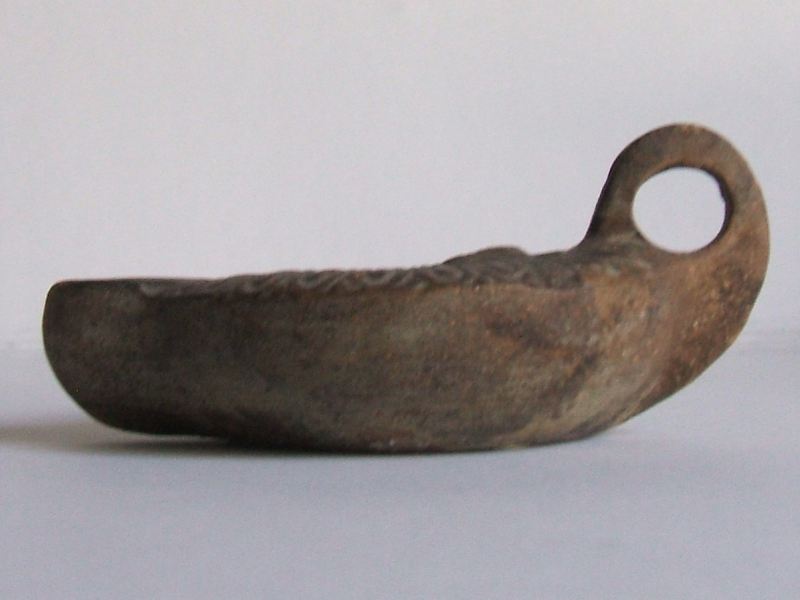 Lamp - Side view.
Lamp - Side view.
The lamp was used for domestic lighting throughout the Mediterranean basin due to its low cost.
In its simplest form, it consisted of a tank with a hint of a small spout.
It used pure olive oil, sometimes mixed with tallow, in which a plant fibre wick was immersed.
From the 3rd century BC, the technical innovation of a two-valve matrix enabled the mass production of lamps and increased their diffusion and variety.
As in the case of the amphoras, the phenomenon of the lamps allows us to talk of "index fossils", that is to say those special objects which, when found during an archeological, stratigraphic excavation enables us to date all the other assocated objects with sufficient certainty.
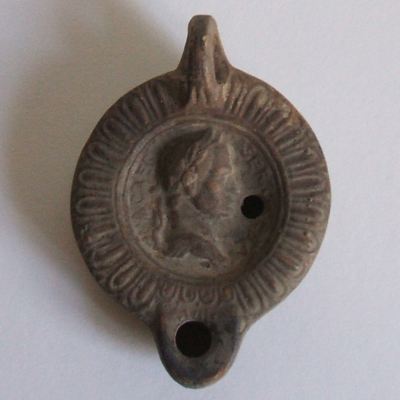 Lamp - Seen from above.
Lamp - Seen from above.
The "classic" lamps were mainly terracotta and consisted of a little bowl - tank, a tiny spout to allow the wick to come out, a handle to hold it and, in the case of the closed shapes, a hole to fill it.
The use of lamps was limited in our territory due to the type of fuel needed (even oil obtained from other food sources was not very common) and for the abundant wood and resin, which enabled the use of practical, economic torches.
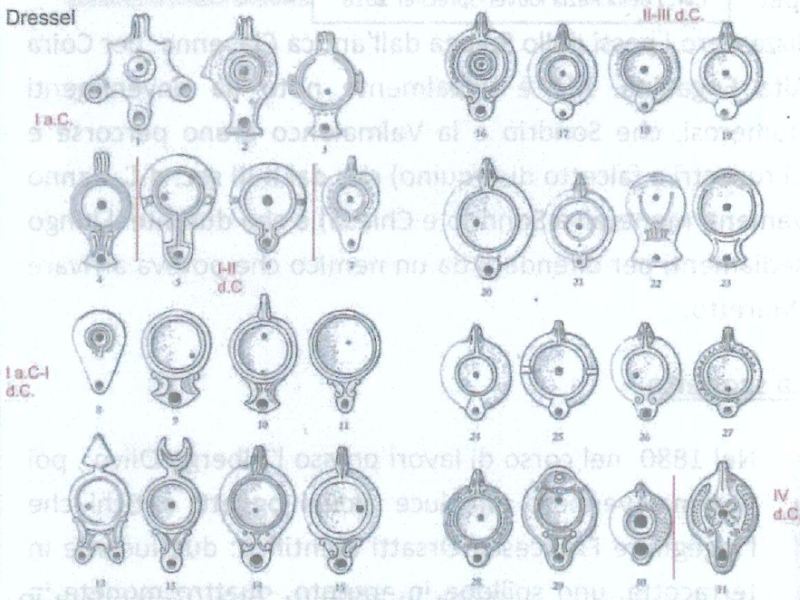 Reproduction of the Dressel Table with dates.
Reproduction of the Dressel Table with dates.